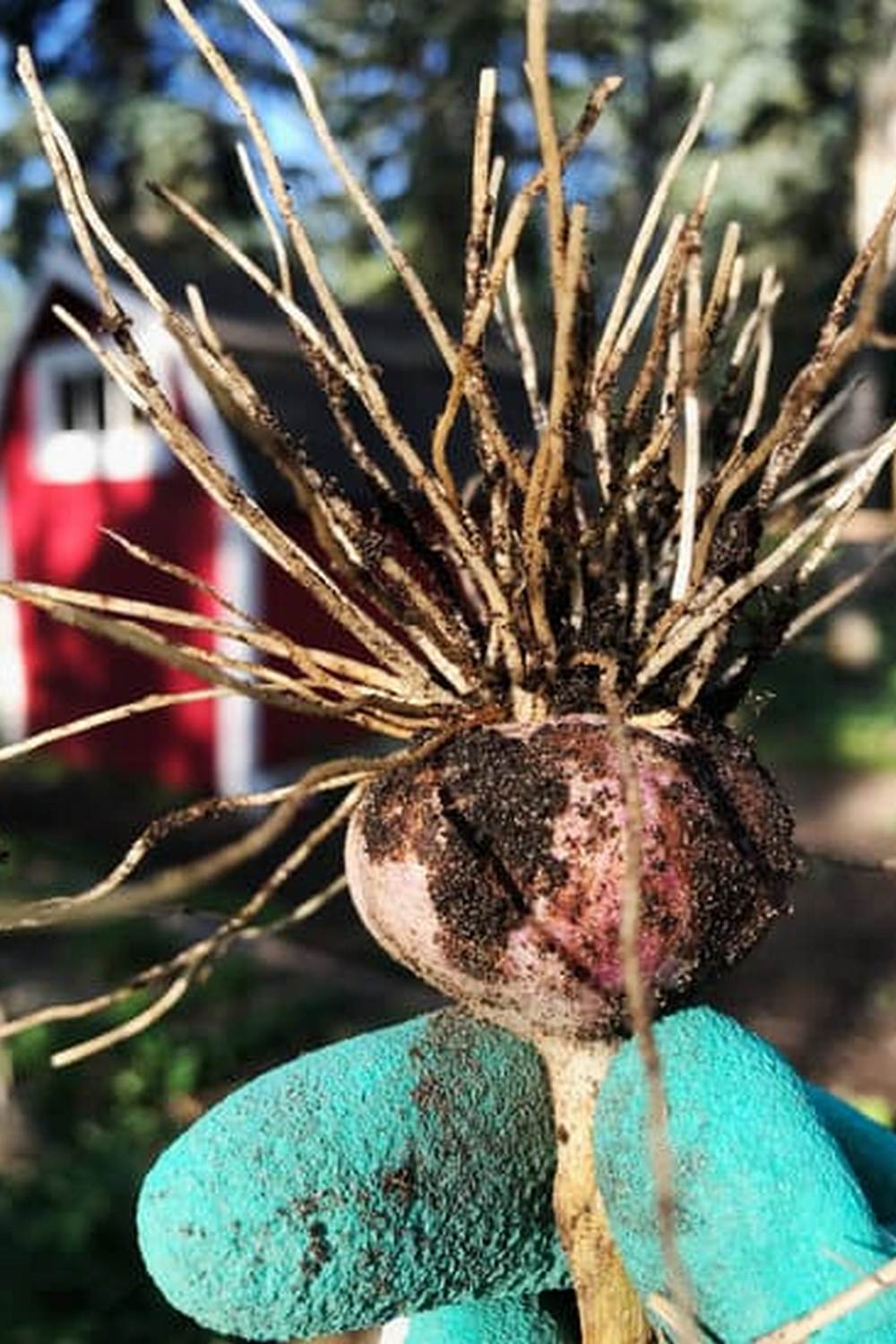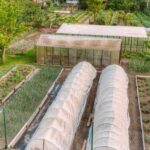Ground contact lumber is a popular material used in construction, known for its durability and ability to withstand moisture and decay. However, the safety of using ground contact lumber in vegetable gardens has raised questions and concerns among gardeners. In this article, we will explore the potential risks and benefits of using ground contact lumber in vegetable gardens, as well as best practices for ensuring the safety of your plants and vegetables.
Ground contact lumber is specifically designed to be in direct contact with the ground, making it a common choice for outdoor construction projects such as decks, fences, and raised garden beds. Its resistance to decay and moisture makes it an attractive option for long-term use in garden structures.
When it comes to vegetable gardens, the safety of ground contact lumber becomes crucial due to the potential risks of chemical preservatives leaching into the soil and harming plants. Understanding the differences between ground contact lumber and other types of lumber, as well as knowing how to mitigate these risks, is essential for any gardener considering using this material in their vegetable garden.
Understanding Ground Contact Lumber
Ground contact lumber is a type of wood that is specially treated to withstand exposure to moisture, decay, and insects. This makes it an ideal choice for outdoor construction projects, such as decks, fences, and garden beds. Unlike above-ground lumber, ground contact lumber is designed to be in direct contact with the ground or water, making it more resistant to rot and decay.
One of the key differences between ground contact lumber and other types of lumber is the treatment process. Ground contact lumber is typically pressure-treated with chemical preservatives to improve its durability and longevity. However, this also raises concerns about the safety of using ground contact lumber in vegetable gardens. The potential risks include the leaching of chemicals into the soil and the potential harm to plants and vegetables.
To address these risks, it is important to carefully consider the type of ground contact lumber used in vegetable gardens. Additionally, treating the lumber with safe alternatives to chemical preservatives can help minimize any potential harm to plants. Proper positioning of ground contact lumber in the garden can also reduce the risk of chemicals leaching into the soil.
| Ground Contact Lumber | Vegetable Garden Safety |
|---|---|
| Treated to withstand moisture and decay | Chemical preservatives may pose risks |
| Potential leaching of chemicals into soil | Careful consideration and treatment can make it safe |
| Durable and long-lasting option for outdoor construction | Proper positioning can minimize risks |
Potential Risks of Ground Contact Lumber in Vegetable Gardens
Understanding the potential risks associated with using ground contact lumber in vegetable gardens is essential for maintaining a safe and healthy growing environment. While ground contact lumber offers durability and resistance to moisture, it may also pose threats to plants, vegetables, and even human health due to chemical preservatives and leaching. Therefore, it is crucial to carefully consider the implications of using ground contact lumber in a vegetable garden.
Chemical Preservatives in Ground Contact Lumber
One of the primary concerns surrounding the use of ground contact lumber in vegetable gardens is the presence of chemical preservatives. These preservatives are designed to protect the wood from decay, fungi, and insects, but they may also contain toxic substances that can be harmful if released into the soil. Arsenic and copper are commonly used in pressure-treated lumber, and both have been linked to potential health risks when exposed at high levels.
Leaching of Chemicals Into the Soil
Another risk factor associated with ground contact lumber in vegetable gardens is the leaching of chemicals into the soil. Over time, rainwater or irrigation can cause these chemicals to seep out of the wood and contaminate the surrounding soil. This can negatively impact plant growth and pose risks if consumed by humans through harvested vegetables.
Potential Harm to Plants and Vegetables
The use of ground contact lumber containing harmful chemicals can potentially harm plants and vegetables in a garden. As roots grow and spread throughout the soil, they may come into direct contact with contaminated areas, absorbing toxins that can affect their growth and overall health. Additionally, vegetables that are directly in contact with treated lumber may absorb harmful substances, presenting a risk to those who consume them.
In light of these potential risks, gardeners must carefully weigh their options when considering whether or not to use ground contact lumber in their vegetable gardens. Taking proactive measures such as selecting safer alternatives or treating the lumber appropriately before use can help mitigate these concerns while still enjoying the benefits of using this type of material.
Benefits of Ground Contact Lumber in Vegetable Gardens
Ground contact lumber is a type of wood that is specifically treated to withstand moisture and decay, making it an ideal choice for construction projects that come into direct contact with the ground. When used in vegetable gardens, ground contact lumber offers several benefits that can contribute to the success and longevity of the garden.
Here are some of the key benefits of using ground contact lumber in vegetable gardens:
- Durability and longevity: Ground contact lumber is designed to resist decay and deterioration, which means it can last for many years even when exposed to soil and moisture. This durability makes it a cost-effective choice for building raised beds or other garden structures.
- Ability to withstand moisture: Unlike regular untreated wood, ground contact lumber is treated to repel water and resist rot, making it an excellent choice for environments where constant moisture is present, such as in vegetable gardens.
- Cost-effectiveness: While the initial cost of ground contact lumber may be higher than untreated wood, its longevity and ability to withstand environmental factors make it a cost-effective choice in the long run. This makes it a practical investment for gardeners looking to build durable and sustainable structures within their vegetable gardens.
Despite these benefits, some gardeners may have concerns about whether ground contact lumber is safe for their vegetable gardens. By following best practices for using this type of lumber and considering alternatives, it is possible to mitigate any potential risks associated with its use.
Best Practices for Using Ground Contact Lumber in Vegetable Gardens
Ground contact lumber is a popular choice for construction due to its durability and ability to withstand moisture and decay. However, when it comes to using ground contact lumber in vegetable gardens, there are some important considerations to keep in mind. It is crucial to ensure that the safety of ground contact lumber is prioritized in order to prevent any potential harm to plants and vegetables.
One of the main concerns with using ground contact lumber in vegetable gardens is the presence of chemical preservatives used to protect the wood from rot and decay. These chemicals can potentially leach into the soil over time, posing a risk to the plants and vegetables growing in the garden. This raises the question: is ground contact lumber safe for vegetable gardens?
To minimize these risks, there are best practices that can be followed when using ground contact lumber in vegetable gardens. Firstly, it’s important to choose the right type of ground contact lumber that has been treated with safer preservatives or alternatives.
Additionally, treating ground contact lumber with safe sealants or stains can help make it more suitable for use in vegetable gardens. Proper positioning of the lumber within the garden can also help minimize any potential harm from leaching chemicals.
In addition to ensuring safety, these best practices can also help preserve the longevity and benefits of using ground contact lumber in vegetable gardens. By taking these precautions, gardeners can enjoy the durability and cost-effectiveness of ground contact lumber without compromising the safety of their plants and vegetables.
| Best Practices | Benefits |
|---|---|
| Choose the right type of treated ground contact lumber | Durability and longevity |
| Treat with safe sealants or stains | Ability to withstand moisture and decay |
| Properly position within the garden | Cost-effectiveness |
Alternative Materials for Vegetable Gardens
When it comes to choosing materials for your vegetable garden, there are several alternatives to ground contact lumber that can provide a safe and sustainable option for your gardening needs. While ground contact lumber is commonly used in construction due to its durability and ability to withstand moisture and decay, there are concerns about the potential risks associated with its use in vegetable gardens.
Cedar and Redwood as Safe Alternatives
One alternative to ground contact lumber for vegetable gardens is the use of cedar and redwood. These types of wood are naturally resistant to decay and insects, making them ideal for use in outdoor settings. Cedar and redwood also contain natural preservatives that help protect them from rotting, making them a safer option for growing edible plants.
Composite Materials for Raised Beds
Another popular choice for vegetable gardens is the use of composite materials for constructing raised beds. Composite materials are made from a combination of wood fiber, plastic, and other additives, making them durable, long-lasting, and resistant to rotting. These materials also do not leach harmful chemicals into the soil, providing a safe environment for growing vegetables.
Natural Untreated Wood Options
For those who prefer natural untreated wood options, there are several types of wood that can be used safely in vegetable gardens. Woods such as untreated pine and fir can be used if they are positioned away from direct contact with the soil or treated with non-toxic sealants to prevent decay and leaching.
By exploring these alternative materials, gardeners can make informed decisions about the best options for their vegetable gardens while ensuring that their choice is safe for plant growth and consumption. Ultimately, understanding the potential risks of ground contact lumber can lead to better choices when it comes to selecting materials for your garden.
Case Studies and Experiences
When it comes to using ground contact lumber in vegetable gardens, hearing from other gardeners who have had firsthand experience with this material can provide valuable insights. These case studies and experiences can help shed light on the potential risks and benefits of using ground contact lumber, as well as any best practices for ensuring the safety of the vegetable garden. Here are some testimonials from gardeners who have used ground contact lumber in their vegetable gardens:
- Testimonial 1: “I used ground contact lumber for my raised vegetable beds, and I found that it was incredibly durable and long-lasting. Despite being exposed to moisture and soil, the lumber showed no signs of decay after several years. My vegetables thrived in these beds, and I had no concerns about the safety of the lumber.”
- Testimonial 2: “I initially used ground contact lumber for my vegetable garden, but I quickly realized that the chemicals in the treated wood were leaching into the soil. I noticed stunted growth in some of my plants, and I decided to switch to untreated cedar for my raised beds. Since making this change, I’ve noticed a significant improvement in the health of my vegetables.”
- Testimonial 3: “I experimented with different types of ground contact lumber in my vegetable garden, including pressure-treated pine and composite materials. While these options were initially cost-effective, I ultimately found that they posed potential risks to my plants. After consulting with a professional, I learned about alternative materials such as redwood and untreated wood that are safer for vegetable gardens.”
These testimonials highlight the diverse experiences that gardeners may encounter when using ground contact lumber in their vegetable gardens. Hearing from others who have navigated these challenges can provide valuable guidance for making informed decisions about which materials to use for constructing raised beds or other structures in a vegetable garden.
Conclusion
In conclusion, the safety of ground contact lumber for vegetable gardens is a topic that requires careful consideration. While ground contact lumber offers benefits such as durability, moisture resistance, and cost-effectiveness, it also poses potential risks due to the chemical preservatives used in its treatment. The leaching of these chemicals into the soil can harm plants and vegetables, raising concerns about the safety of using ground contact lumber in vegetable gardens.
However, there are best practices that can be implemented to make ground contact lumber safe for vegetable gardens. By choosing the right type of ground contact lumber, treating it to minimize chemical leaching, and positioning it appropriately in the garden, gardeners can mitigate potential risks and ensure the safety of their vegetable crops. Additionally, alternative materials such as cedar, redwood, and composite materials offer safe options for constructing raised beds and garden structures.
It is important for gardeners to weigh the pros and cons of using ground contact lumber in their vegetable gardens and to exchange experiences and tips with other gardening enthusiasts. By sharing knowledge and insights, gardeners can make informed decisions about the materials they use in their gardens and contribute to creating healthy and thriving growing environments for their vegetables.
Frequently Asked Questions
What Type of Wood Is Safe for Vegetable Garden?
The type of wood safe for a vegetable garden is untreated, natural wood such as cedar or redwood. These types of wood are less likely to leach harmful chemicals into the soil, making them ideal for gardening.
Is Lowes Pressure-Treated Wood Safe for Vegetable Gardens?
Lowes pressure-treated wood is not considered safe for vegetable gardens. This type of wood has been treated with chemicals that can potentially leach into the soil and be absorbed by the plants, posing a risk to human health if consumed.
Are Landscape Timbers Safe for Vegetable Gardens?
Landscape timbers may not be safe for vegetable gardens, especially if they are treated with creosote or other harmful chemicals. It’s important to thoroughly research the type of treatment used on landscape timbers before using them in a vegetable garden to ensure safety for consumption.

If you’re looking to get into vegetable gardening, or are just looking for some tips on how to make your current garden better, then you’ve come to the right place! My name is Ethel and I have been gardening for years. In this blog, I’m going to share with you some of my best tips on how to create a successful vegetable garden.





